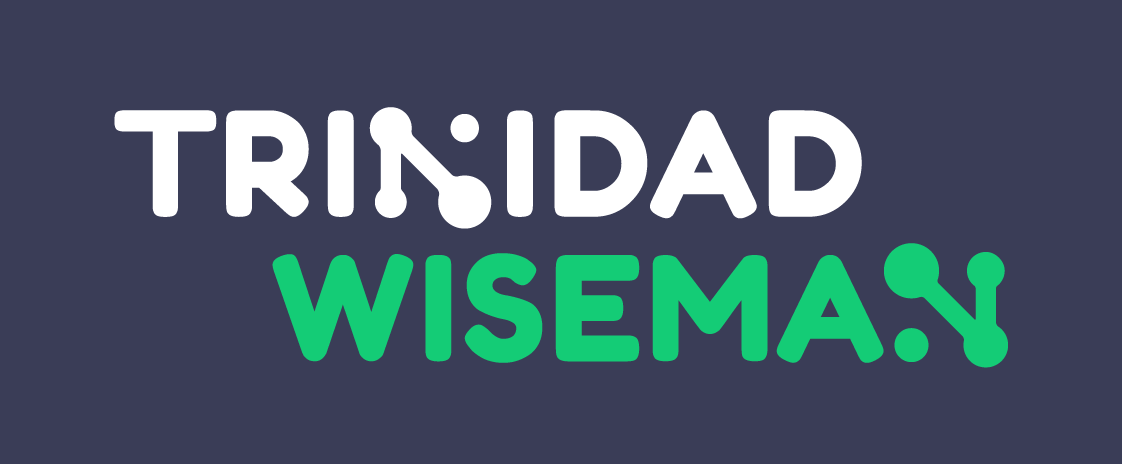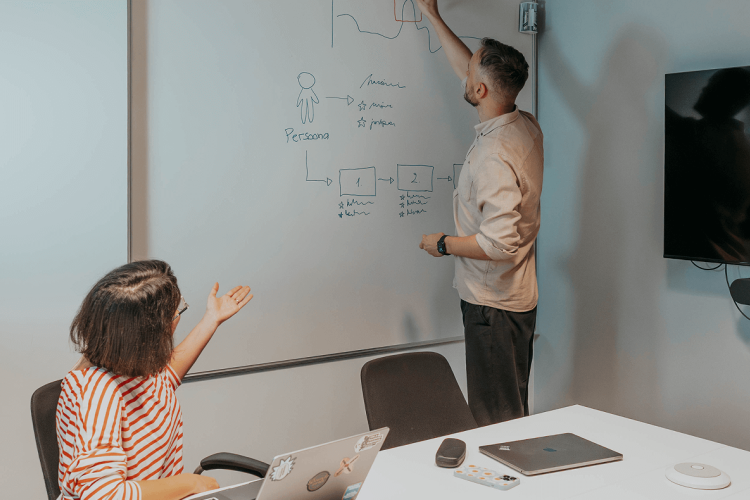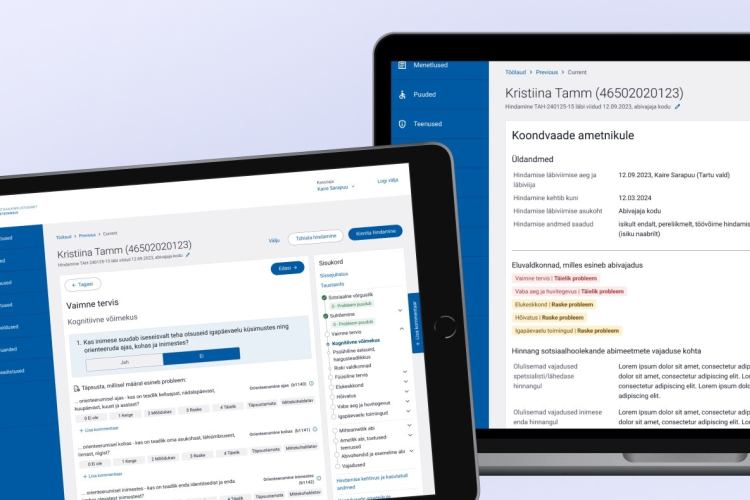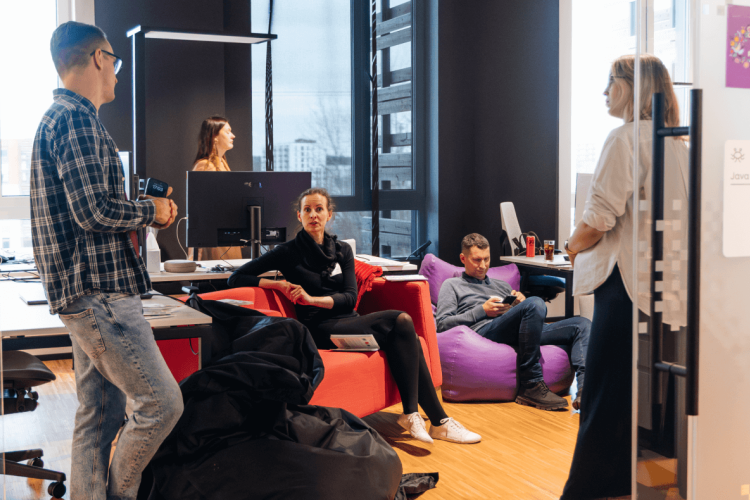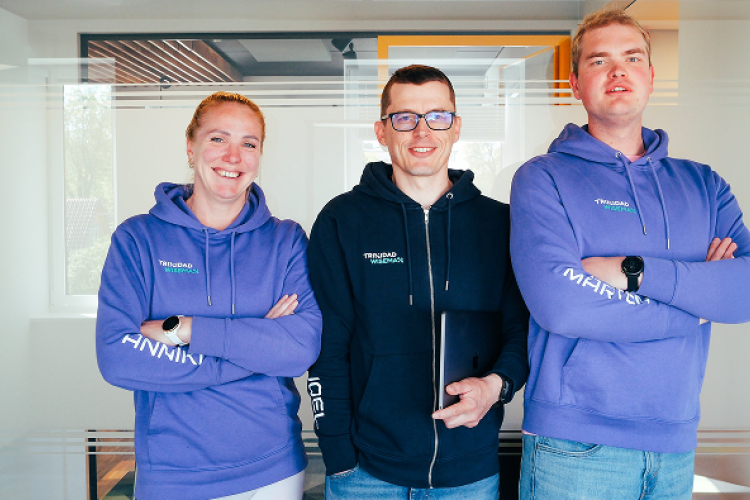Major ICT Trends that Trinidad Wiseman Will Invest in for the Near Future
The world of technology is characterized by rapid and continuous development, making it often difficult to keep up. Exciting times lie ahead as numerous technologies are maturing, creating new and significantly impactful opportunities and solutions in the ICT world that affect people's lives and work processes.
In this article, we take a look at the ICT sector as a whole, as well as the specific areas in which Trinidad Wiseman (hereinafter TWN) is involved. We provide an overview of influential trends in business analytics, e-government services, service design, accessibility, and neuro-UX. We discuss ESG (environmental-social-governance) sustainability reporting and Atlassian tools as a foundation for digital transformation.
TWN is optimistic about the future of the ICT sector
Despite current economic uncertainty, we are optimistic about the future of the sector at TWN. Historically, the ICT sector has been less affected by crises than other sectors. In our opinion, Estonian ICT service companies remain in good health, and the current economic situation has had little impact on our clients' behavior. Instead, we have noticed increased competitiveness.
Key themes for this year include automation, artificial intelligence (AI), no-code and low-code, cybersecurity, and, unfortunately, a continuing shortage of experienced developers. Time and resource-intensive deep-tech solutions can lead to significant scientific breakthroughs, especially in AI fields. Machine learning and adaptive algorithms can now write code at a considerable level.
It's important to note that specialists' jobs are not disappearing, but the nature of their work is changing. AI does not directly replace humans but is an excellent assistant, making human work more efficient and faster while generating new ideas within seconds.
No-code and low-code solutions, which significantly simplify the work of non-technical people who cannot write code, are rapidly gaining prominence.
Cybersecurity has never been more critical than it is now, and advancements in this area are expected. For example, there may be hope that action will be taken with the military cyber unit, where the number of applicants exceeds the current membership limit.
Job cuts are happening worldwide – in both startups and large technology companies. We believe that layoffs in weaker IT and startup companies in the Estonian ICT sector may positively impact the overall sector, bringing new labor to the market that reduces wage pressure. As already mentioned, good developers are still in short supply, but we are gradually seeing changes – people are choosing jobs more consciously and staying in place longer.
The younger generation's growing interest in working in service companies is also noticeable. Young people can find excitement and challenges here and value a stable, skill-developing work environment. Moreover, salaries are usually comparable to startups, but there is significantly less stress.
TWN's priorities for this year include creating Java back-end development capabilities, increasing (cyber)security, and focusing more on export projects (Norway, Finland, e-government).
Additionally, we will introduce new data science-based services resulting from our partnership with Intelex Insights, which has become our machine learning and business analytics center. Our CEO, Ander Tenno, predicts a 10% employee growth and a 20% service revenue increase (approx. 9M) by the end of the year. The total revenue, including license sales, should be in the range of 15-17M.
Real-time business analytics (BI) and machine learning (AI) solutions help make more rational business decisions
Data science-based solutions (BI and AI), based on historical data, can be successfully used for making business decisions and planning for the future. However, to take these recommendations seriously, companies must first trust the accuracy of their data and create a habit of using data within the organization.
Business analytics is moving towards real-time reporting, which means an increase in data volume and the need to involve machine learning solutions. As real-time analytics is critical for making quick business decisions, companies using BI tools are undoubtedly more successful than those relying on lagging reports.
The development of the field is characterized by increasingly complex relationships, interactivity, and the integration of many different and diverse forms of data. An automated BI solution helps to achieve this quickly and easily. As a counterbalance to complexity, it is gratifying that machine learning and business analytics fields are becoming more human-centered, making report creation simpler and more understandable for non-experts.
According to Harvard Business Review, companies that trust their data and use data-driven decision-making daily have a four-fold increase in revenue growth. Thus, to outpace competitors, it is necessary to implement a data-driven culture in your organization and use high-quality business analytics (BI) systems for transparent and reliable data processing.
AI or artificial intelligence solutions should be considered when an organization has a culture and skills for using data, and there are needs that traditional BI can no longer efficiently support. AI is a mathematical algorithm that thinks for humans and finds patterns in input data, which can be beneficial in solving existing problems.
While the use of AI solutions is on the rise globally, in Estonia, it is still in its infancy and just being learned to apply.
Trinidad Wiseman now has its own machine learning and business analytics center, Intelex Insights. Read our recently published blog for practical examples of making businesses more efficient with BI and AI solutions and learn how Intelex Insight creates these solutions.
Estonia's e-government maintains its leading position, and the quality of public procurements is improving
Estonia's e-government ranks first in the European Union according to the Digital Economy and Society Index (DESI), but in the overall ranking, which takes into account all other sectors besides e-government, Estonia is in ninth place. Slow internet speed is one of the main problems our country is actively addressing. It is also worth noting that Estonia continues to be a pioneer and ranks among the world's top countries in IT exports.
Surce: The Digital Economy and Society Index (DESI) and Digital Public Services in the Digital Economy and Society Index
2023 promises to be a year of exciting euro-financing opportunities for new development projects and the utilization of existing recovery funds. However, it's important not to forget the ongoing development and maintenance of existing systems.
It's pleasing to see the continued trend of making public services more convenient for people. There is a gradual reduction in the amount of data entry required for life events, as governments become more proactive. The state continues to invest in event-based services, with the child benefit service launching in 2021 and property transactions going digital through e-notary services.
At Trinidad Wiseman, we've contributed to these developments as well. Last year, marriage registration was digitized in Estonia, making the process faster, more convenient, and simpler for people. The implementation of a service for coping with the loss of a loved one is also in the pipeline.
The ITL (Information Technology Association) has made significant efforts to improve the quality of public procurements. For example, the ITL's procurement working group, led by TWN's Business Development Manager Marko Nemberg, released a practical guide for IT development procurements in February, helping public sector organizations make more informed decisions.
Service design awareness is growing, and 2025 will bring new accessibility (WCAG) obligations for the private sector
The growth trend in service design will undoubtedly continue, with organizations increasingly examining their services and their various components to enhance user experience, convenience, and value. Service design doesn't always require technical changes; improvements can also be made through redesigning the service delivery process.
It's gratifying to observe a growing awareness of service design in society. Public sector organizations are increasingly requesting training from us to help people from various backgrounds identify what they can do in their workplaces to provide better services.
In 2023, TWN will focus heavily on training. In the first half of the year, we've conducted a training program for library staff across Estonia commissioned by the Ministry of Economic Affairs and Communications, and we're also training public sector employees.
WCAG compliance, or ensuring accessibility, remains an important aspect of each design and development project. 2025 will bring new obligations for certain sectors within the private industry – read more about it in our blog and start preparing now.
Design systems and artificial intelligence (AI) tools simplify designers' work
The general direction in design is to use automation, design systems, and AI tools to simplify designers' work and reduce time spent on routine and standard activities, allowing more time for creative tasks.
Specialization is increasingly valued. Often, clients assume that designers also have the skills to write short texts and assign names to elements. In reality, this might not be the case, as someone may be a talented designer but conveying information through text is a different skill.
This mindset is changing, and the benefits and outcomes of involving specialists in specific fields – such as UX writers and content designers – are increasingly recognized.
On the other hand, this doesn't mean that full-stack individuals, capable of handling various tasks, can't be part of a team. At TWN, we consider each employee's strengths, interests, and areas for growth, offering suitable work projects and development opportunities accordingly.
Design trends can be broadly divided into functional (e.g., buttons, input fields) and visual (e.g., illustrations, texts). As the quality of design systems and AI tools created by the design community improves, they assist and expedite functional design tasks, while visual design largely remains a human endeavor.
However, AI solutions can be successfully used for text-related tasks, such as summarizing, emphasizing key points, or creating headlines.
Today, we can interact with technology as if it were a person, without resorting to "mathematical and technological" vocabulary. A simple command like "make the text shorter or friendlier" is enough for the machine to understand. AI is undoubtedly a powerful and useful tool for generating ideas and creating drafts (e.g., text, images). However, a thinking person is still needed to transform a draft into a finished solution.
Neuro UX is rapidly becoming part of our everyday lives
Over the past decade, this field has experienced explosive growth and is expected to continue expanding along with new developments, such as the use of neuro-UX tools for device control and communication. Brainwave-based psychological indicators are being utilized in marketing and other sectors, with their applications increasing each year.
AI integration has accelerated learning in neuro-research and tools to the point where they can now be implemented in daily life.
However, the nature of human brainwave patterns makes creating a universal communication model challenging. To overcome this obstacle, invasive experiments (allowed in the US but not in Europe), such as using chips to measure brainwaves, are being explored.
Further complexity arises when measuring multiple physiological indicators (e.g., brainwaves, facial expressions, gaze tracking) and correlating them to determine a person's state. For instance, it can be difficult to ascertain whether a student is paying attention to an interesting lecture or a message on their phone.
Despite these challenges, we anticipate continued growth in the field due to technological advancements and increased availability of neuro UX tools and devices. At TWN, we are working to make neuro UX services accessible not only to corporations but also to medium-sized businesses.
We have entered the era of ESG and sustainability reporting
Starting in 2025, large companies will be required to submit sustainability or ESG (environmental-social-governance) reports. The goal is to improve transparency and quality of information related to sustainability issues, supporting the transition to a sustainable economy in line with the Paris Agreement and the European Green Deal.
Some details are still being refined, but in general, large companies will need to assess risks related to sustainability in three main categories. They must evaluate their carbon footprint for environmental issues, assess working conditions and employee health risks for social issues, and highlight procedures for avoiding conflicts of interest and corruption for governance issues.
Atlassian products have become widespread, extending beyond IT departments
An increasing number of companies across various industries, such as marketing, finance, and manufacturing, recognize the versatility and efficiency of Jira and its related services.
Jira Service Management is making waves by offering a comprehensive solution for managing customer inquiries, facilitating task delegation, and providing valuable insights through its analytics and reporting capabilities. Its ease of use and effectiveness have made it a popular choice for businesses of all sizes.
Additionally, Jira Assets has gained attention for its ability to manage assets, from company-used technology and contracts to large organizations' servers and services. Jira Assets' seamless integration with Jira Service Management further enhances its capabilities for providing comprehensive asset management solutions.
Concurrently, Confluence usage has grown. As navigation is a critical element of a good intranet, efforts are being made to make navigation in Confluence more logical and user-friendly. Organizations are also looking for ways to keep information up-to-date within their intranets and explore opportunities to introduce more automated processes in Confluence that require attention and collaboration from multiple team members.
Confluence has become the preferred choice for creating intranets, even for non-IT companies, enabling employees to smoothly access and share information, resulting in improved processes and knowledge dissemination. Confluence's automation capabilities have further increased its adoption in non-IT departments, with processes such as onboarding actively being transitioned to Confluence.
